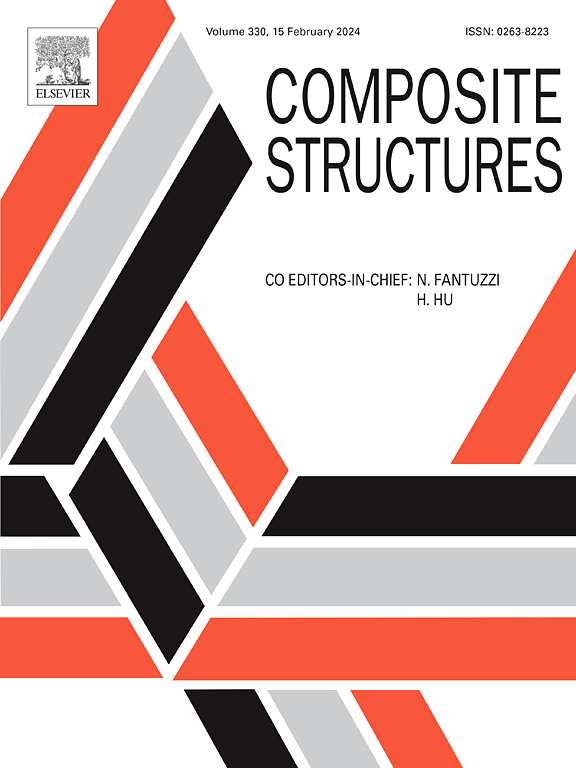基于有限元法的机器学习预测纬向平纹针织复合材料的工程常数
IF 6.3
2区 材料科学
Q1 MATERIALS SCIENCE, COMPOSITES
引用次数: 0
摘要
针织物增强聚合物复合材料以其高柔韧性、高强度、轻量化和良好的损伤容限,已成为现代工程材料的重要组成部分。然而,针织复合材料的弹性性能受到针织物复杂几何形状、材料类型和针织工艺的影响。传统的基于大量实验的针织复合材料弹性性能计算方法耗时耗力。本文采用有限元法(FEM)和机器学习(ML)相结合的方法来代替传统的计算模型。利用Pycatia软件和Catia软件预获取不同纬编平纹织物的几何特征,并基于有限元多尺度分析获得纬编平纹复合材料的工程常数数据库。在此基础上,采用SVR、RF、ANN三种机器学习模型预测纬编平针复合材料的工程常数,并基于Shapley加性解释(Shapley Additive exPlanations)分析研究输入特征对织物弹性性能的影响。还进行了机械测试,以验证机器学习模型的准确性。结果表明,三种机器学习模型的R2均大于0.98,预测值与实验值高度一致。该研究为纬向平纹针织复合材料的工程常数预测提供了一种准确、有效的方法,为高级复合材料的设计和优化提供了依据。本文章由计算机程序翻译,如有差异,请以英文原文为准。
Machine learning based on finite element method to predict engineering constants of weft plain knitted composites
Knitted-fabric reinforced polymer composites have become an important member of modern engineering materials due to their high flexibility, high strength, lightweight and good damage tolerance. However, the elastic properties of knitted composites are affected by the complex geometry of the knitted fabric, the type of material and the knitting process. Conventional calculation methods for obtaining elastic properties of knitted composites based on a large number of experiments are time-consuming and labour-intensive. In this study of weft plain knitted composites, the finite element method (FEM) and machine learning (ML) were used jointly to replace the conventional computational models. Different weft plain knitted fabric geometrical features were pre-obtained by Pycatia and Catia, and a database of engineering constants for weft plain knitted composites was obtained based on finite element multiscale analysis. Then three machine learning models (SVR, RF, ANN) were trained to predict the engineering constants of weft plain knitted composites and the effect of input features on elastic properties was investigated based on SHAP (Shapley Additive exPlanations) analysis. Mechanical tests were also performed to verify the accuracy of the machine-learning models. The results show that the R2 of all three machine learning models was higher than 0.98 and the predicted values were highly consistent with the experimental values. This study provided an accurate and efficient method for predicting the engineering constants of weft plain knitted composites, which will help in the design and optimization of advanced composites.
求助全文
通过发布文献求助,成功后即可免费获取论文全文。
去求助
来源期刊

Composite Structures
工程技术-材料科学:复合
CiteScore
12.00
自引率
12.70%
发文量
1246
审稿时长
78 days
期刊介绍:
The past few decades have seen outstanding advances in the use of composite materials in structural applications. There can be little doubt that, within engineering circles, composites have revolutionised traditional design concepts and made possible an unparalleled range of new and exciting possibilities as viable materials for construction. Composite Structures, an International Journal, disseminates knowledge between users, manufacturers, designers and researchers involved in structures or structural components manufactured using composite materials.
The journal publishes papers which contribute to knowledge in the use of composite materials in engineering structures. Papers deal with design, research and development studies, experimental investigations, theoretical analysis and fabrication techniques relevant to the application of composites in load-bearing components for assemblies, ranging from individual components such as plates and shells to complete composite structures.
 求助内容:
求助内容: 应助结果提醒方式:
应助结果提醒方式:


